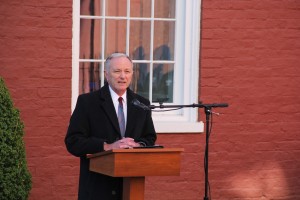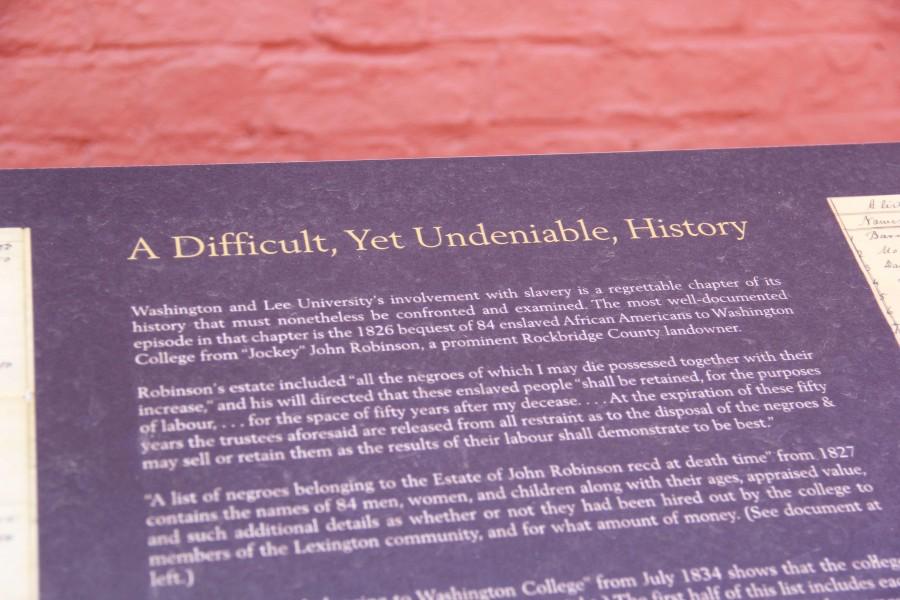“A Difficult, Yet Undeniable, History”: Washington and Lee installs marker commemorating university’s historical ties with slavery
April 8, 2016
A marker recognizing Washington and Lee’s ownership of enslaved persons prior to the Civil War was dedicated Tuesday afternoon in a ceremony led by President Kenneth Ruscio.
The marker itself, a plaque located between Robinson Hall and Tucker Hall, includes images of historical documents showing the names, ages and appraised values of the 84 slaves owned by “Jockey” John Robinson, a major donor to Washington College in the early 1800s. Robinson left his enslaved persons to the university in 1826 through his will.
“Today we are here because of a story we have not told, or at least a story we have told only rarely,” Ruscio said.
Titled “A Difficult, Yet Undeniable, History,” the marker is an outcome of the Special Working Group on the History of African Americans at W&L, a group commissioned by President Ruscio in 2013 and chaired by Associate Provost and Professor of Geology Elizabeth Knapp.
Head of Special Collections and Archives at W&L, Tom Camden, ‘76, is a member of the committee. He said that once the group began more in-depth research, the resources and information they found available were astounding.

“We knew bits and pieces, yet when we started looking at the full story it was overwhelming,” he said.
Ruscio said that the university’s decision to address its ties to slavery may draw criticism from those who believe that W&L is simply trying to be “politically correct.”
“This is not politically correct,” he said, “It is historically correct.”
Following Ruscio’s remarks to the crowd, Anthonia Adams, ‘16, read “at the cemetery, walnut grove plantation, south carolina, 1989,” written by African American poet Lucille Clifton and selected for the occasion by English Professor Lesley Wheeler and other members of her department.
A group of seven students, staff and faculty then took turns at the podium to read all 84 names.
Anna Russell Thornton, ‘16, studied abroad at Oxford University, a school embroiled in controversy over Cecil Rhodes’ ties to apartheid in South Africa. She said Washington and Lee’s marker responds to the national and international conversation over how to handle the legacy and symbolism associated with buildings named for different slaveowners.
“I think that the way this has been done, with leaving the name on Robinson Hall and acknowledging the contribution that he made to the university, while also … having the plaque that shows the darker side of his legacy, and just complicating it and forcing us to ask questions and think about how we reconcile those in our mind, is so much more productive,” Thornton said.
Camden clarified that this marker is only the beginning. The committee would eventually like to set up a more extensive memorial, but whether that memorial will take the form of an annual symposium, scholarship, or something completely different is still in the works.
“We know that there are many stories still to be told, so this is not a time to congratulate ourselves for recognizing this moment of history,” Ruscio said. “Instead we must see this as part of an ongoing and long overdue effort to tell the history of Washington and Lee courageously and completely, and to learn from it.”



